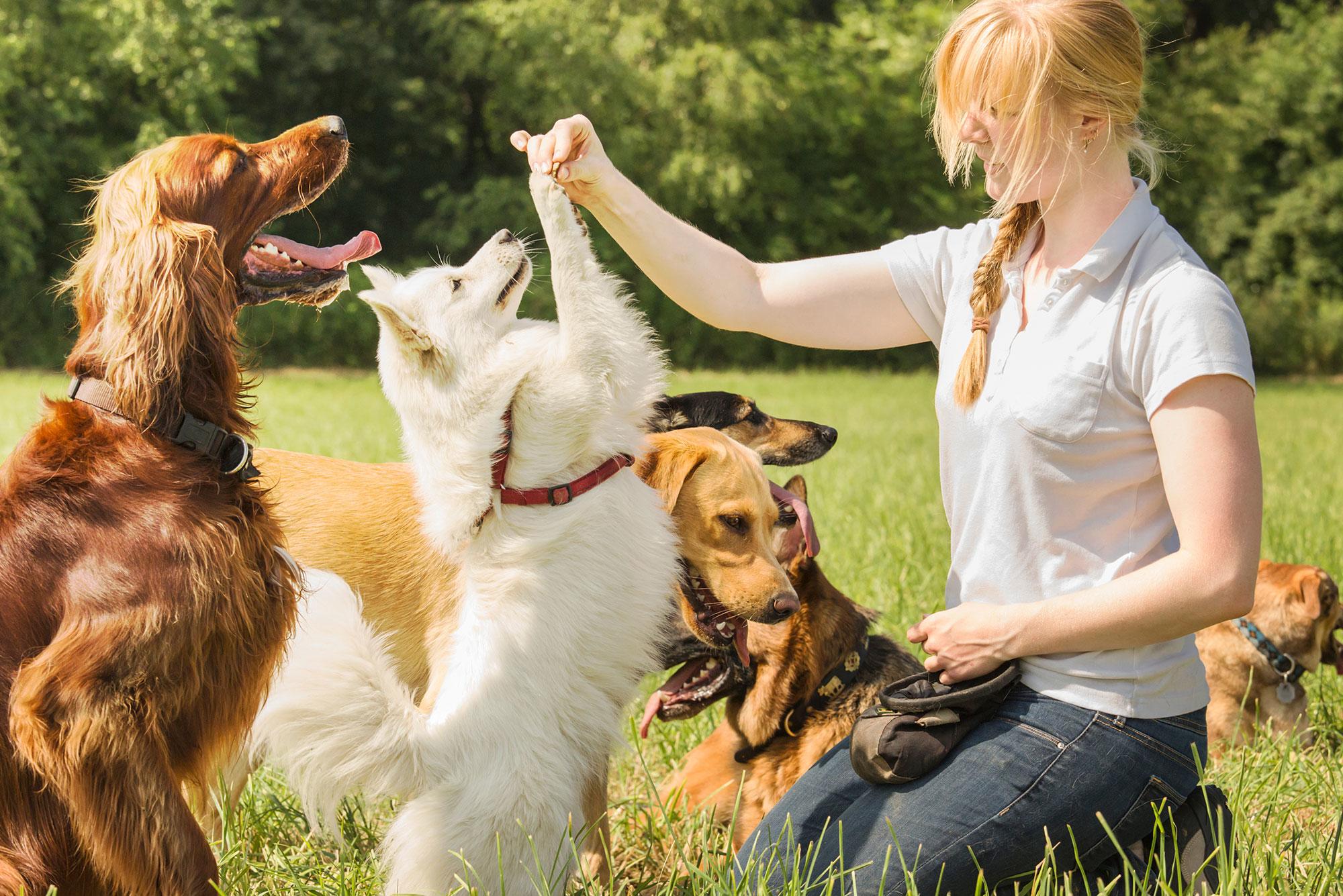Complete puppy behavioral training programs for a happy dog.
Complete puppy behavioral training programs for a happy dog.
Blog Article
Master Important Commands: Reliable Pet Dog Training Made Easy
Reliable canine training is a fundamental element of responsible pet dog ownership, and mastering crucial commands serves as the structure for a harmonious partnership between trainer and pet. Comprehending the subtleties of canine habits and the training procedure is essential; nonetheless, the trip to a trained dog commonly presents unforeseen difficulties that call for interest.
Understanding Your Pet dog's Actions
To understand the subtleties of effective pet dog training, it is vital to damage down and evaluate your pet dog's actions. Dog training. Comprehending the inspirations behind your pet's actions is critical; behaviors can come from impulse, fear, excitement, or a wish for focus. By observing your canine in numerous scenarios, you can recognize patterns that may show underlying feelings or requirements
For example, a pet that barks excessively might be expressing dullness, anxiousness, or a demand for social communication. Alternatively, a pet that exhibits damaging actions may be seeking excitement or remedy for stress and anxiety. Recognizing these triggers allows you to customize your training approach successfully.
Additionally, it is essential to think about the dog's type attributes, as they can influence actions considerably. Some breeds are inclined to particular qualities, such as herding or guarding impulses, which can influence their responses to certain stimulations.
Last but not least, consistency in your responses to your dog's habits fosters a far better understanding between you and your family pet. This shared comprehension is fundamental for constructing trust fund and facilitating an efficient training procedure that nurtures both behavior improvement and positive support.
Essential Commands to Educate
Instructing essential commands is a fundamental element of effective dog training, giving the structure for a well-behaved and receptive pet. These commands not only enhance communication in between the proprietor and the pet but likewise make sure safety and security in numerous settings.
One of the most essential commands consist of "Sit," which encourages your canine to remain fixed and tranquil; "Remain," which strengthens the concept of continuing to be in one area up until launched; and "Come," which is important for remembering your dog from potentially unsafe circumstances. "Down" teaches dogs to relax, advertising relaxation and control, while "Leave it" helps avoid dogs from grabbing unsafe or undesirable products.
" Heel" is one more vital command that motivates your dog to stroll very closely next to you, boosting chain good manners. Lastly, "No" offers as a critical boundary-setting command, helping to deal with unfavorable behaviors.
Training Techniques for Success
Effective canine training depends greatly on employing a variety of methods that accommodate both the pet's knowing style and the proprietor's training objectives. One vital strategy is favorable support, which entails fulfilling desired habits with deals with, appreciation, or play. This technique motivates the pet to repeat those behaviors, promoting a strong bond between owner and family pet.

An additional efficient strategy is remote control training, where a distinct noise, made by a remote control, marks the exact moment a canine executes a desired activity. This accurate timing helps dogs connect the behavior with the incentive, boosting their understanding.
Uniformity is essential in all training methods. Establishing clear commands and maintaining the exact same hints assists the pet dog grasp assumptions extra rapidly. Additionally, brief, engaging training sessions avoid monotony and boost retention.
Including socialization opportunities is also important. Subjecting pets to different environments, people, and other animals aids them establish self-confidence and adaptability.
Finally, patience plays a substantial duty in effective training - Dog training. Each canine learns at their own rate, and recognizing this can cause an extra satisfying training experience for both the proprietor and the pet dog. Applying these techniques will certainly set the structure for efficient dog training
Usual Difficulties and Solutions
Despite the best training techniques, dog owners frequently experience common challenges that can hinder progress. When household participants make use of various commands for the exact same habits, it confuses the dog, leading to irregular feedbacks.

In addition, some dogs might exhibit stubbornness or lack inspiration. This can frequently be resolved by incorporating favorable reinforcement methods, such as deals with or praise, to motivate wanted behaviors. Tailoring incentives to what your canine locates most motivating can substantially boost their engagement.
Finally, fear or stress and anxiety can restrain progress in training. Acknowledging indicators of stress and adjusting the training speed as necessary is critical. Utilizing progressive direct exposure site to been afraid stimuli can help develop confidence gradually, promoting a more effective training experience.
Keeping Consistency and Patience
Consistency and persistence are critical in pet training, as they form the foundation for achieving long lasting behavioral modifications. Pet dogs thrive on routine and clear expectations; thus, maintaining a consistent method in commands, benefits, and modifications is necessary. When instructors make use of the very same signs and signals accurately, pets are much better able to realize what is being asked of them. Disparity can bring about complication and frustration, undermining the training procedure.
Just as vital is the duty of perseverance. Educating a pet is not an instantaneous process; it needs time and repetition. Canines, just like human beings, have differing finding out paces and might not understand commands instantly. Trainers need to identify this and stay calm, offering support rather than irritation. Positive reinforcement plays a crucial role here, gratifying wanted actions and assisting to cultivate a trusting partnership between the pet and trainer.
Final Thought
Mastering vital commands is essential to effective dog training, fostering enhanced communication and strengthening favorable behaviors. The application of positive support strategies, coupled with consistency and persistence, dramatically enhances the training experience for both the canine and handler. Resolving common challenges visit this web-site with useful options better sustains the training process. Ultimately, a well-trained pet dog not just shows etiquette but also establishes confidence, contributing to an unified connection in between the pet dog and its proprietor.
Report this page